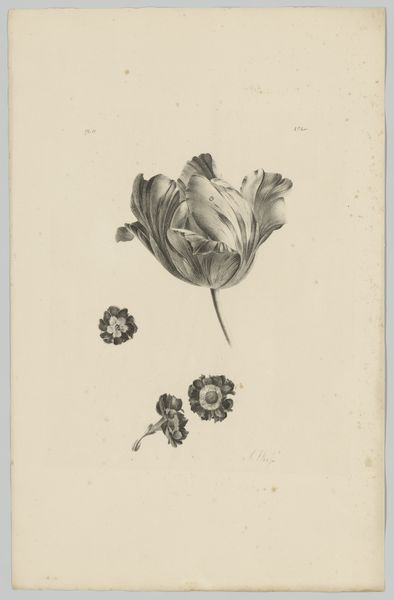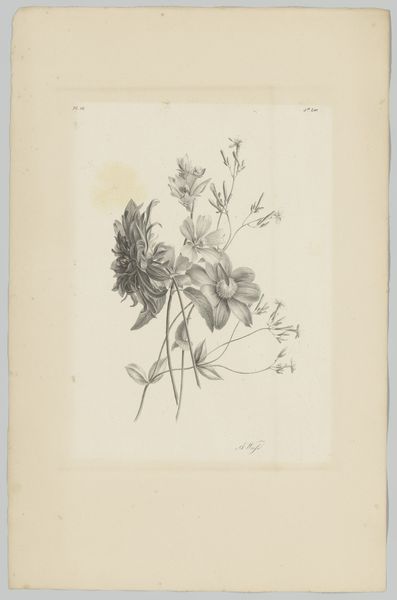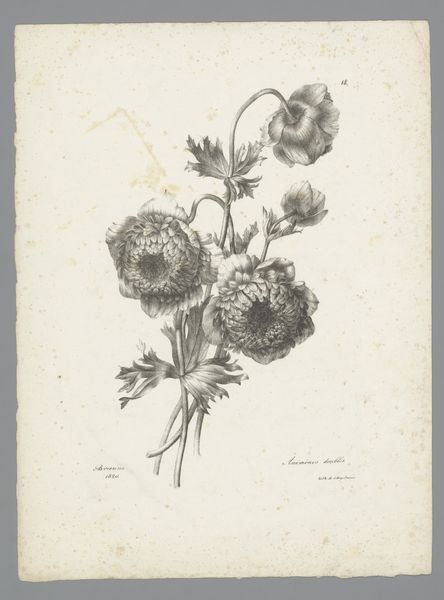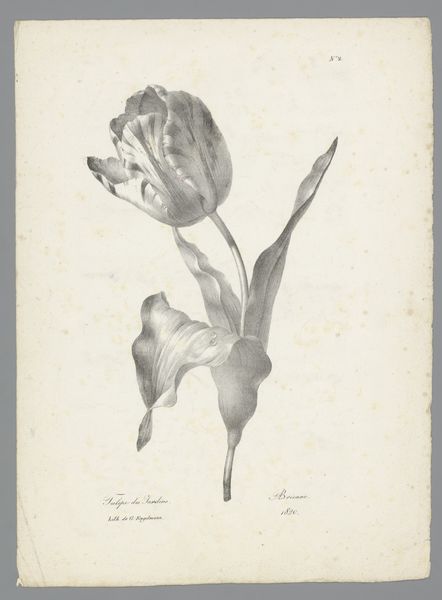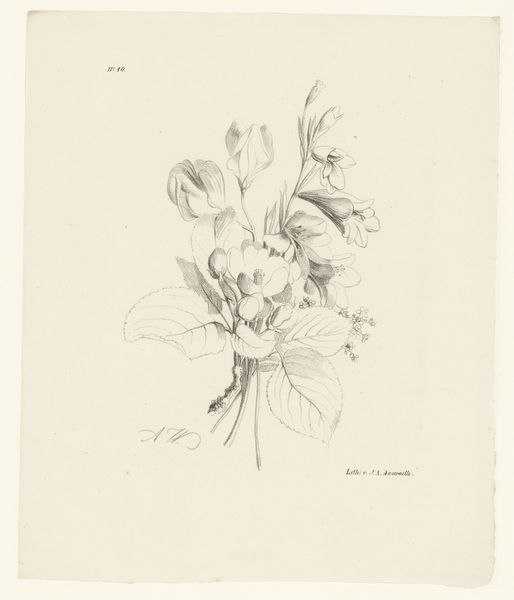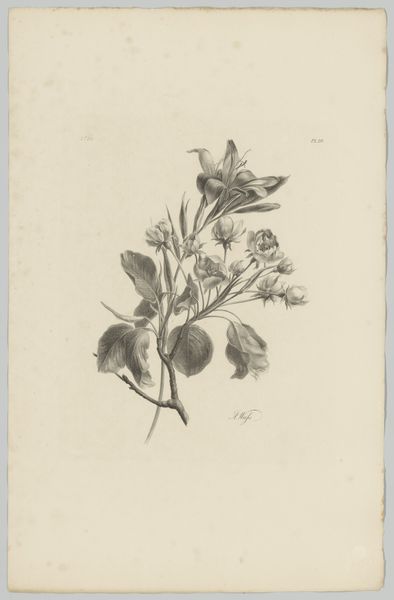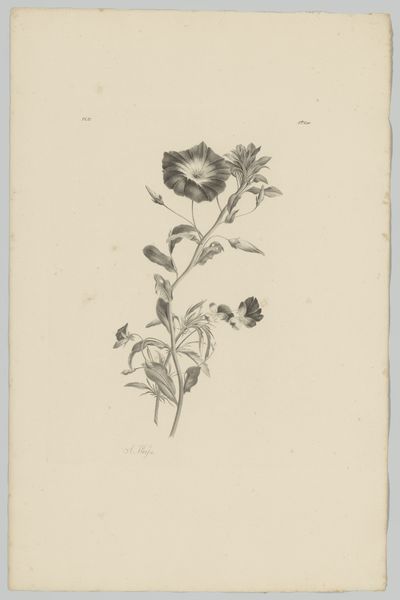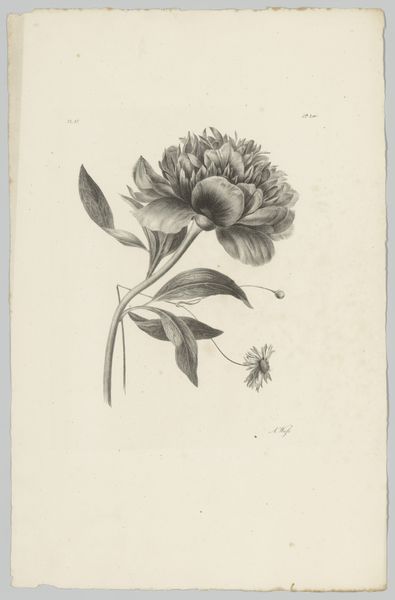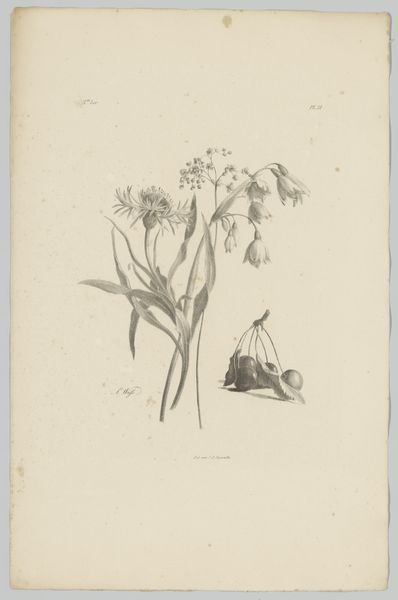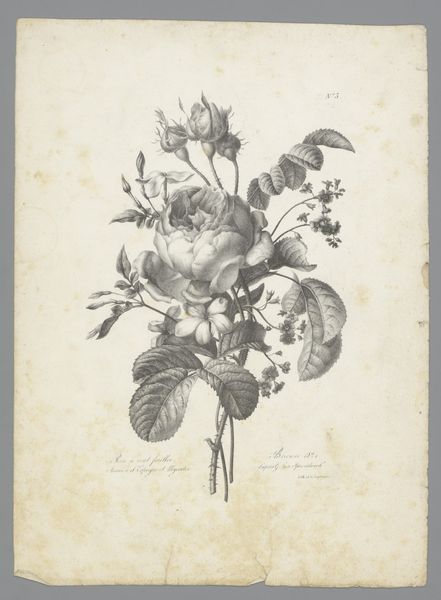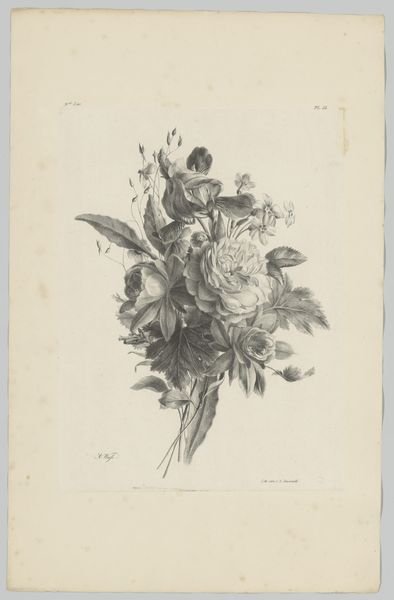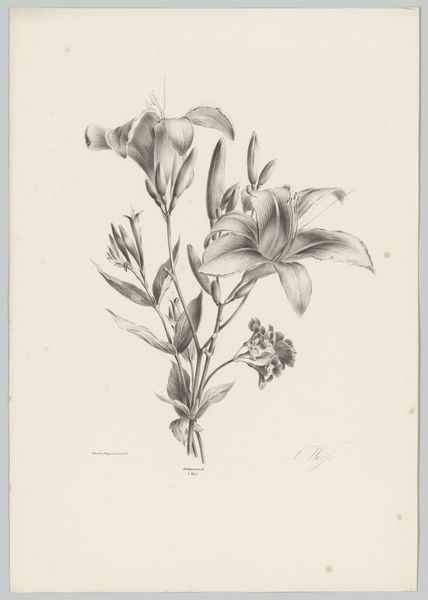
drawing, print, paper, graphite
#
drawing
#
ink paper printed
# print
#
paper
#
romanticism
#
line
#
graphite
#
realism
Dimensions: height 482 mm, width 310 mm
Copyright: Rijks Museum: Open Domain
Curator: This lovely print is called “Twee tulpen”, or “Two Tulips,” made sometime between 1820 and 1833. The artist, Anton Weiss, rendered these blossoms in graphite, ink, and perhaps other printing techniques on paper. Editor: It’s delicate, almost ethereal. The stark contrast between the grey-scale blooms and the negative space evokes a sense of serene detachment. There is a quiet mood that permeates the image. Curator: Yes, the masterful use of line defines the forms meticulously. Look how the subtle gradations create depth and volume, particularly in the tulip petals. The details seem realistic yet reveal a touch of Romanticism. The precise articulation is a remarkable visual description, almost scientific. Editor: Considering the time period, such botanic imagery was becoming increasingly popular among the middle classes. Flowers symbolized status and beauty; printed images made such imagery more widely accessible, influencing domestic tastes and interior design trends of the time. How do you see that connection within the picture? Curator: Precisely. I would argue that this artwork bridges the gap between the desire for pure aesthetic pleasure and a period that needed precision for the rising empirical scientific investigation, using visual means to explore reality. The careful observation transforms simple botany into sophisticated artistry. Editor: Furthermore, let’s not disregard the historical contexts influencing its function, where printed works of flowers influenced not only painting but also ceramics, textiles, and, most importantly, cultivated actual tulip varietals and trade! So this single print carries a broader implication to aesthetics of the time. Curator: Your contextual framework makes it so much richer, to understand not just the work of art but how it became part of people's lives at the time. I am struck again by how form, texture and tone add meaning beyond their original objective function. Editor: And for me, thinking about its place in society enriches my experience of it—beyond being a depiction of an image; it became part of history!
Comments
No comments
Be the first to comment and join the conversation on the ultimate creative platform.
